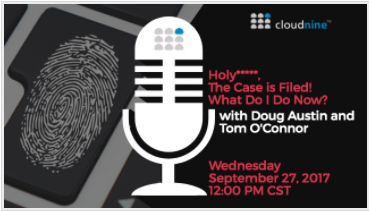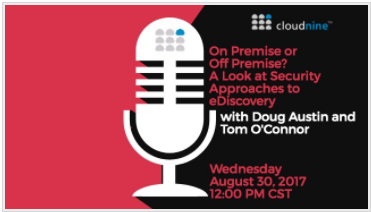The DOJ is the Latest to Learn that Redactions Aren’t as Straightforward as You Think: eDiscovery Best Practices
I keep thinking that all attorneys, especially those in large corporations, large law firms and federal agencies, understand best practices associated with performing redactions. Once again, I find that is evidently not the case.
According to Law360 (DOJ Redaction Flub May Undermine Libor Case, written by Jody Godoy, subscription required), U.S. Department of Justice lawyers made a potentially serious error in a Libor-rigging case against a former Deutsche Bank trader Wednesday when they mistakenly revealed the nature of testimony he was compelled to give to U.K. authorities in a separate probe.
According to the author, the DOJ partially redacted a motion to conceal the content of former Deutsche Bank trader Gavin Black’s testimony before the U.K. Financial Conduct Authority out of concern it could taint the DOJ’s Libor-rigging case against him. But the DOJ lawyers failed to properly excise the sensitive information until Law360 inquired about the faulty redactions last week.
The DOJ has since replaced the document — which was publicly available for more than 12 hours — with a properly redacted version, but the mistake had the potential to undermine their case against Black, especially in light of a July Second Circuit ruling in a similar Libor-rigging case, where they held that testimony compelled in the U.K. cannot be used in U.S. criminal cases and reversed two high-profile convictions. The reversal sent a strong warning to U.S. prosecutors working on cross-border cases.
The day the Second Circuit ruled in that case, Black notified U.S. District Judge Colleen McMahon that he would seek a “Kastigar” hearing in which the government would have to show that its case was developed independently from compelled interviews. The DOJ is fighting the request in large part on the basis that prosecutors on the case have been shielded from the material. The DOJ asked the judge on Aug. 25 for permission to file a response to Black’s hearing request under partial seal. One reason is that compelled testimony is treated as “confidential” under British law and that the FCA had requested it not be publicly filed. The attorneys at the DOJ’s criminal division who work separately from prosecutors on Black’s case also expressed concerns that a publicly filed document could expose the trial team or potential witnesses to the material.
Protecting the FCA testimony was crucial to the case against Black, particularly after the Second Circuit’s ruling reversing the convictions of Anthony Allen and Anthony Conti. The court found a witness may have been influenced by reading Allen’s and Conti’s statements, which were compelled under the threat of imprisonment. The Second Circuit said that fact undermined the case entirely, as the statements were not admissible at trial nor in a grand jury proceeding but had potentially tainted a witness who testified at both.
In the unredacted portions of the brief, the DOJ argued Black is not entitled to a hearing for several reasons. One of them was that the DOJ had taken great pains not to expose its prosecution team to inadmissible material, including asking that the U.K. prosecutors not share any compelled statements with the team as the two countries’ authorities pursued parallel investigations.
In the inadequately redacted portions of the brief, the prosecutors described the content of Black’s interview with the FCA. One sentence was highlighted in black and written in a gray font that was clearly legible. Other portions of the brief were blocked out with what appeared to be black highlighting but were easily read by copying and pasting the contents of the brief into another text document. Word searches of the document returned text that was barely hidden behind the faulty redactions.
A DOJ spokesperson attributed the exposure of the information to “a technical error in the electronic redaction process” that allowed for “manipulation” of the file’s “metadata.”
While I don’t know the specifics, it sounds like the DOJ experienced the first redaction “failure” that I described in this blog post here. Apparently, it still happens.
So, what do you think? Are you aware of any other recent redaction “fails” that have become public knowledge? (other than this one, of course). Please share any comments you might have or if you’d like to know more about a particular topic.

Disclaimer: The views represented herein are exclusively the views of the author, and do not necessarily represent the views held by CloudNine. eDiscovery Daily is made available by CloudNine solely for educational purposes to provide general information about general eDiscovery principles and not to provide specific legal advice applicable to any particular circumstance. eDiscovery Daily should not be used as a substitute for competent legal advice from a lawyer you have retained and who has agreed to represent you.













